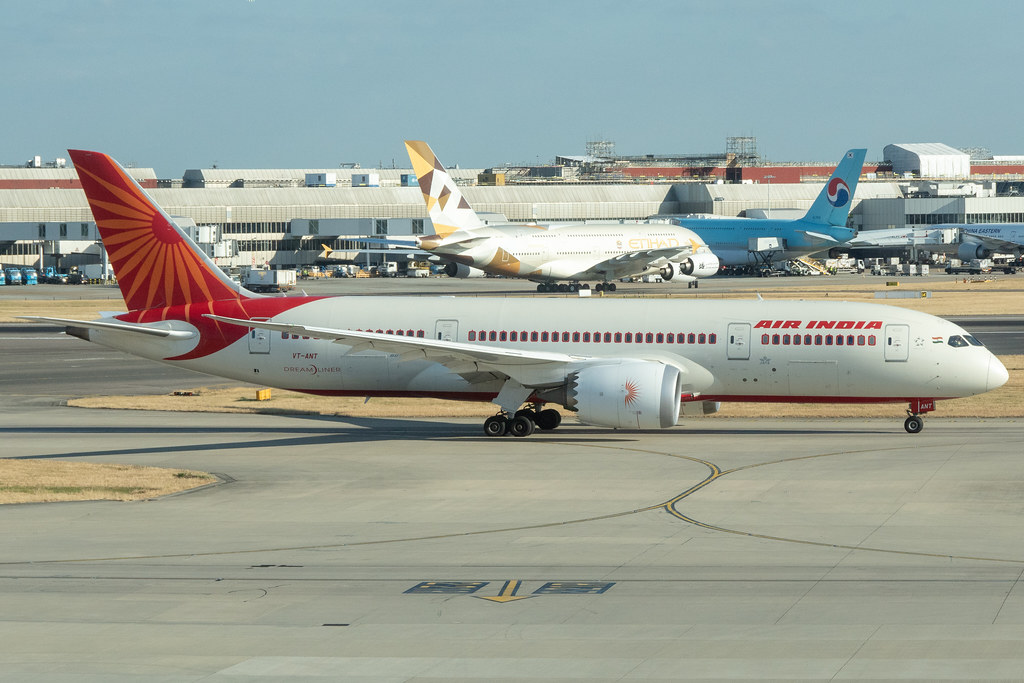
Air India’s flagship aircraft, the Dreamliners, are now fully owned by the carrier after the Government of India decided to terminate the sale and leaseback agreement of the 787s. With the airline moving from public to private ownership, the Tatas start their AI journey with complete control of the carrier’s entire Dreamliner fleet.
- Watch the Largest Indian Air Force flypast with 75 planes
- United Airlines – Second Largest Fleet in the world
- Boeing Posts Full Year Loss As Boeing 737 MAX Deliveries Remain Suspended
- US Forces Chinese Airlines To Suspend 44 Flights
- Lufthansa Expected To Take 40% Stake In Italy’s ITA Soon
Lease pacts canceled
While handing over the airline to the Tata Group, the Indian government also terminated the sale and leaseback agreement of 21 Air India Dreamliners. According to a report by the Economic Times, the government paid all the outstanding lease payments, thus bringing the 787s under full ownership of the carrier. India Ends B787 Sale
However, terminating such an agreement prematurely comes with penalties, which the Indian government has also cleared off.
ET spoke with people familiar with the matter, who commented,
“The lease agreements were very costly. Also, the pandemic has made aircraft cheaper and the underlying leasing rates more feasible. Now, of course, the Tatas will have to ink fresh SLB agreements, if they want to do so.”
Indeed, it remains to be seen whether the new owners will sign a new agreement with an aircraft lessor to raise funds or figure out other fleet management plans.
Air India’s fleet has a total of 27 Dreamliners. Twenty-one of those were leased, and six were already owned by the airline. India Ends B787 Sale
Fleet optimisation
The Tata Group has its work cut out for itself. The Government of India attempted to iron out some issues plaguing the carrier before the handover. It has taken over the majority of the carrier’s debt and cleared the dues to all vendors and suppliers. In addition to that, as pointed out in the ET report, around 1,300 crore (approx. $174 million) worth of arrears have been paid off to employees.
However, many believe that the cost to turn around AI’s fortunes could run into billions. The Tatas have taken over 15,000 crore (approx. $2 billion) worth of AI’s existing debt, but it does not include the expenses of fleet renewal and refurbishment.
The airline’s Boeing 777s are in dire need of a makeover to align with the Tatas’ vision of a world-class carrier. The present configurations of these aircraft are not suitable to compete with most other international carriers. The management will have to decide whether it’s more economical to bear the mammoth costs of refurbishing the 777s or phase them out with better alternatives.
Then there are the grounded planes that haven’t clocked in any flying hours in a while for want of new engines. Again, fitting them out with new engines will cost millions per aircraft, and the Tatas could decide to get rid of them entirely.
Should AI be merged with other airlines under the Tata brand – Vistara being the top candidate – it could also benefit from Vistara’s existing longer range 787-9 airplanes. However, Bhaskar Bhat, the chairman of Tata SIA Airlines, which owns Vistara, has squashed rumours of any immediate merger.
It seems that AI’s new owners have a long road ahead to solve the carrier’s fleet issues.



